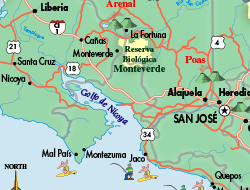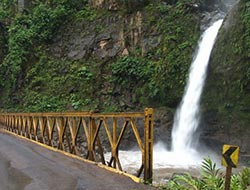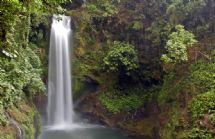Francisco Zuñíga
Francisco Zuñíga carving a sculpture - courtesy of www.franciscozuniga.org
Costa Rican artist Francisco Zúñiga is considered one of the most important Latin American artists in the 20th century. He is known for his sculptures and paintings of indigenous women. Today, his work is on display in many of the most famous museums in the world, including the Museum of Modern Art in New York City, the San Diego Museum of Art and the Hirshhorn Museum in Washington D.C.
His Beginnings
Francisco Zúñiga was born in San José in 1912 as the child of a renowned religious sculptor in Costa Rica. Because he was surrounded by art, Zúñiga created and produced sculptures of his own from a very early age. In 1935, his work, “La Maternidad” won first prize in a contest offered by El Salón de Escultura de Costa Rica. It was a stone piece depicting a mother and child. The government would later rescind the prize because the work caused controversy, but his artwork was getting noticed, even as a young man.
Zúñiga researched pre-Hispanic work and its relation to contemporary Latin American art as part of his early education. Although it was recommended that he study abroad to further his education, he was unable to do so. Colleagues helped him organize an individual exhibition in Costa Rica in the early 1930s, and he used the earnings from this to emigrate to Mexico City in 1936.
In Mexico, Zúñiga would study formally under several prominent artists at La Escuela de Talla Directa at the art institute La Esmeralda. It was there that renowned Mexican painter Manuel Rodríguez Lozano allowed Zúñiga access to his personal library. Once Zúñiga finished his education, he took a job as a faculty member at La Esmeralda. He remained there until he retired from teaching in 1970.
His Career
Zúñiga was influenced by pre-Hispanic art, but his preferences lay in figurative art. Many of his best pieces were images of women in traditional roles, which to him represented maternity and family. Over his career, he created 35 public sculptures, many dedicated to Latin American heroes and artists. He earned multiple international awards for his work in Mexico, Belgium and Japan. The Encyclopedia Britannica calls him one of the best modern sculptors from Latin America.
One of his most noted sculptures is called “Seated Yucatan Woman,” in which the grace and beauty of a peasant woman in Mexico is depicted. It is currently on display at the Hirshhorn Museum. “Mother and Daughter Seated” is another sculpture he created, on display in San Diego. Depicting the women of Mexico, both sculptures honor the relationship between the family.
Most of his most important work was considered his sculptures, but he also created paintings of women and girls in Latin America. In 1992, he won the top cultural award in Mexico, the Premio Nacional. Two years later, the Palacio de Bellas Artes gave him a tribute because of his career. Although Francisco Zúñiga was a native Costa Rican artist, he became a Mexican citizen in 1986, 50 years after he arrived in the country.
His Legacy
Francisco Zúñiga went blind near the end of his life, due to an illness. However, he never let his handicap stop him from creating art. Instead of working in stone, he simply shifted to terra cotta. This allowed him to use his hands to create the lines in his work. He died on August 9, 1998 at his studio in Mexico City.
To fully understand Costa Rica culture, it’s important to visit museums and galleries that show artist’s renditions of the country’s heritage. While some Costa Rican artists may not have the national recognition of Francisco Zúñiga, but there are many other talented artists in the country who are creating spectacular works worth experiencing.
Although Costa Rica is known for its beaches and national parks, the artwork is also just as breathtaking. Visit the Museum of Contemporary Art and the Costa Rican Art Museum when you’re in the country for an experience you won’t forget.
7 Days / 6 Nights
Starting at $978 per person
10 Days / 9 Nights
Starting at $1,440 per person









.jpg)



